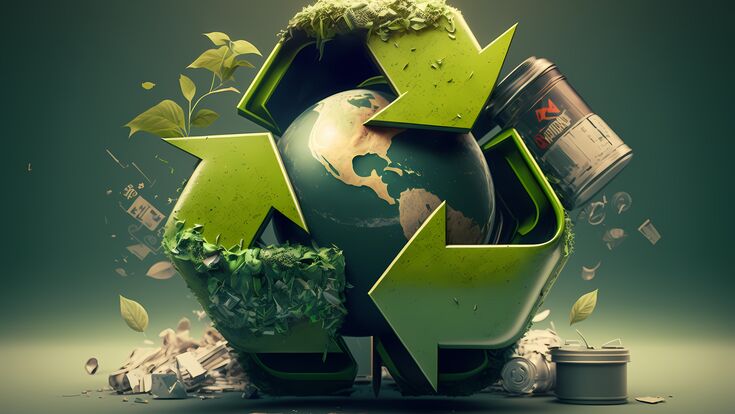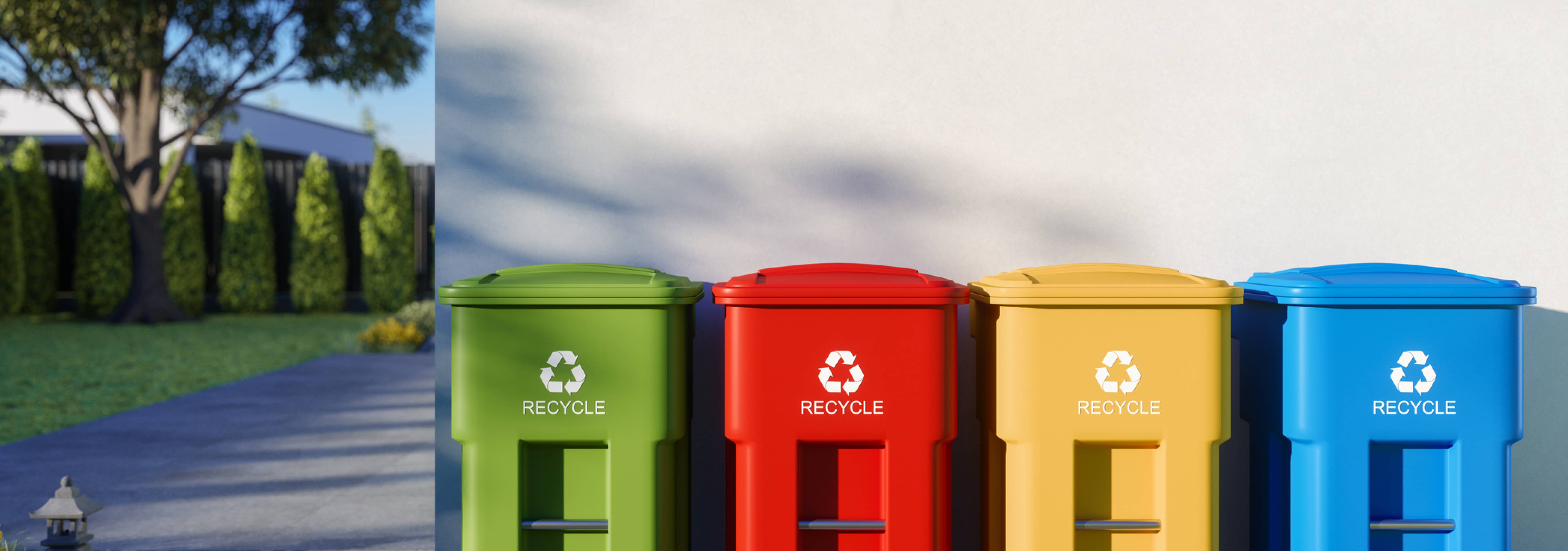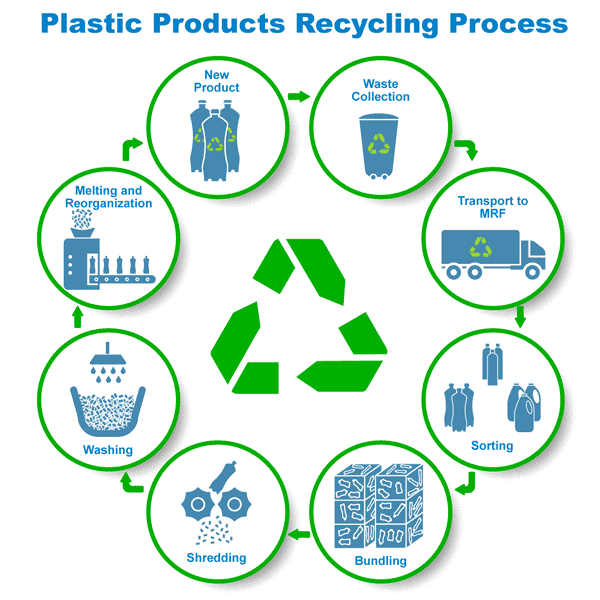The Influence of Recycling Lives Services on Communities and the Setting
The Influence of Recycling Lives Services on Communities and the Setting
Blog Article
Checking Out Various Kinds Of Waste in Modern Waste Monitoring Equipment
The modern landscape of waste management involves browsing a complicated range of waste types, each needing specialized handling and disposal techniques to minimize ecological effects. Local strong waste, dangerous waste, digital waste, and natural waste each existing unique difficulties and chances for resource recuperation. Cutting-edge options such as smart waste containers and waste-to-energy modern technologies are becoming critical tools in enhancing performance and sustainability. Understanding these waste kinds is necessary for fostering public understanding and encouraging energetic engagement in sustainable techniques. What techniques can effectively resolve these different types of waste while promoting a circular economic situation?
Community Solid Waste
Metropolitan strong waste, typically referred to as house garbage or waste, incorporates a selection of discarded products produced by residential, industrial, and institutional sources within a community. This waste stream commonly includes things such as packaging, food scraps, yard trimmings, paper, plastics, textiles, and discarded house items. The management of metropolitan solid waste is a vital component of metropolitan preparation and public health and wellness, demanding reliable collection, transportation, and disposal systems.
Efficient waste monitoring systems are designed to lessen ecological impact while taking full advantage of resource recuperation. This typically involves a mix of approaches consisting of recycling, landfilling, and composting. Reusing programs target products like paper, glass, metals, and particular plastics, diverting them from landfills and reestablishing them into the manufacturing cycle. Composting organic waste, such as food scraps and yard trimmings, not only minimizes garbage dump usage yet additionally produces valuable dirt modifications.
Towns have to also resolve the logistical and economic obstacles linked with waste management. Executing pay-as-you-throw systems, enhancing public recognition, and purchasing technology can considerably boost waste diversion prices. By incorporating these practices, towns can foster lasting neighborhoods, reduce greenhouse gas emissions, and preserve natural resources.
Contaminated Materials

Efficient contaminated materials monitoring entails numerous critical steps: recognition, treatment, disposal, and partition. Identification involves the category of waste based on its unsafe residential or commercial properties. Partition guarantees that hazardous products are saved individually from non-hazardous waste to avoid cross-contamination. Therapy techniques, such as chemical neutralization, incineration, and stablizing, are employed to minimize the toxicity, quantity, or flexibility of the waste. Disposal options, including protected landfills and underground storage, are picked to guarantee long-lasting containment.
Governing frameworks, such as the Resource Preservation and Recovery Act (RCRA) in the USA, give guidelines and requirements for dangerous waste administration. Adherence to these policies, combined with improvements in waste therapy technologies, is necessary in minimizing the dangers connected with unsafe waste.
Electronic Waste
Electronic waste, commonly described as e-waste, represents a quickly expanding challenge in waste monitoring systems internationally. This type of waste encompasses thrown out digital devices and equipment such as mobile phones, computer systems, tvs, and other digital appliances. The fast speed of technical advancement, combined with lowering product lifespans and consumer demand for the most up to date tools, has actually exponentially raised the quantity of e-waste generated annually.
E-waste is especially bothersome due to its complex composition, frequently having dangerous materials like lead, mercury, and cadmium, which pose considerable environmental and health risks otherwise appropriately managed. i loved this On the other hand, e-waste also includes useful products such as copper, gold, and silver, which can be recouped and recycled. The dual nature of e-waste-- both valuable and dangerous-- necessitates specialized handling, reusing, and disposal procedures.
Reliable e-waste monitoring involves rigorous governing structures, durable collection systems, and advanced reusing innovations. Public understanding and participation are crucial, as inappropriate disposal practices, such as unlawful disposing and informal recycling, exacerbate environmental contamination and carcinogen. As a result, improving e-waste administration methods is important for mitigating ecological effect and recovering important sources in a significantly digital world.

Organic Waste
Organic waste, making up kitchen area scraps, yard trimmings, and farming residues, stands for a significant portion of the worldwide waste stream. This kind of waste is naturally degradable, meaning it can be broken down by microbes into simpler natural substances. Despite its capacity for all-natural decomposition, inappropriate monitoring of organic waste can result in negative ecological effects, including the exhaust of greenhouse gases such as methane, which contribute to environment change.
Reliable monitoring of natural waste is important for decreasing these environmental impacts (recycling lives services). Composting is a widely embraced approach, transforming organic waste into nutrient-rich garden compost that can boost soil wellness and farming productivity. In addition, anaerobic digestion is an arising modern technology that transforms natural waste into biogas, a renewable resource resource, and digestate, which can be made use of as plant food
Municipalities and waste administration entities should apply durable natural waste collection and therapy programs to take full advantage of the advantages of these procedures. Public education and learning projects can also play an essential duty in encouraging houses and organizations to separate natural waste from various other kinds of waste. By prioritizing the administration of natural waste, societies can reduce land fill use, lower greenhouse gas discharges, and produce useful results for agricultural use.

Cutting-edge Waste Management
In the image source realm of waste administration, innovative approaches are transforming exactly how cultures handle their refuse, intending for sustainability and efficiency. One prominent technology is the execution of smart waste containers outfitted with sensing units that check fill degrees and maximize collection paths.
Another notable growth is the fostering of waste-to-energy (WtE) technologies. By converting non-recyclable waste right into useful power via processes such as incineration and anaerobic food digestion, WtE minimizes landfill concern and gives a renewable energy resource. Furthermore, advancements in chemical recycling permit the breakdown of complicated plastics right into their original monomers, enabling the production of new, high-quality plastic items.
Furthermore, the round economy design is acquiring grip, highlighting the style of products and systems that focus on reusability and resource performance. This all natural technique motivates industries to lessen waste generation from the start. Through these ingenious strategies, modern waste management systems are not just attending to the immediate obstacles of waste disposal yet also leading the way for an extra lasting future.
Verdict
A thorough understanding of municipal strong waste, harmful waste, digital waste, and natural waste, paired with the application of cutting-edge waste monitoring remedies, is necessary for mitigating ecological influences. Integrating technologies such as clever waste containers and waste-to-energy systems can boost effectiveness and sustainability. Effective waste management techniques not just foster resource recovery but also advertise public recognition and participation, inevitably adding to the development of a round economic situation.
The modern landscape of waste administration involves navigating a complex array of waste types, each requiring specialized handling and disposal techniques to reduce environmental influences. Community solid waste, hazardous waste, electronic waste, and natural waste each existing unique challenges and chances for resource recuperation.Electronic waste, generally referred to as e-waste, represents a rapidly growing difficulty in waste monitoring systems worldwide. Through these innovative strategies, contemporary waste administration systems click here for info are not only addressing the prompt challenges of waste disposal but additionally paving the method for a more sustainable future.
A comprehensive understanding of community solid waste, dangerous waste, digital waste, and natural waste, combined with the execution of innovative waste monitoring solutions, is crucial for minimizing environmental effects. (recycling lives services)
Report this page